



Notes on the identification of Chamaeleo (Trioceros) wiedersheimi and its subspecies
By Christopher V. Anderson
Citation:
Anderson, C.V. (2005). Notes on the identification of Chamaeleo (Trioceros) wiedersheimi and its subspecies. Chameleons! Online E-Zine, October 2005. (http://www.chameleonnews.com/05OctAndersonWiedersheimi.html)
After the release of Mike Coraggio's February 2005 article "Chamaeleo (Trioceros) wiedersheimi, the Monet of the Chameleons", a range of questions regarding the identification of Ch. (T.) wiedersheimi to its subspecies level came in as sellers and keepers sought to better understand what they were looking at and what they should be looking for while finding for suitable mates. The following will hopefully combine scientific descriptions of the differences between subspecies with photographic aid in an attempt to make accurate identification of this species easier.
Ch. (T.) wiedersheimi are a small species from Nigeria and Cameroon. Males and females have a gular crest and males have an obvious crenulated or scalloped dorsal crest while the dorsal crest of the female is less prominently developed. Their casque is low and flat and no head ornaments or occipital lobes are present.
Once you've established you do in fact have Ch. (T.) wiedersheimi and have determined which sex you have, the following may prove useful in differentiating the subspecies.
In both sexes, if you look at the dorsal surface of the casque, you will see a ridge of enlarged scales dividing part of the top of the casque. This is the parietal crest. It seems to be more evident in some individuals than others and isn't always easy to see for differentiation but in Ch. (T.) wiedersheimi perreti, the parietal crest is only indicated at the anterior part of the casque (toward the nose) while in Ch. (T.) wiedersheimi wiedersheimi, it is indicated in the posterior section of the casque and joins with the rear of the casque.
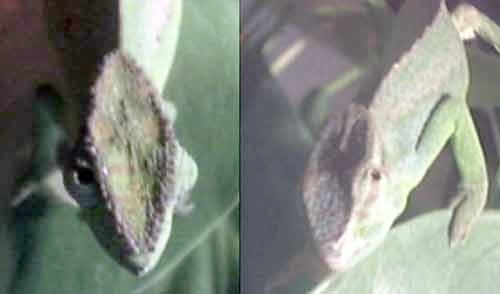
Parietal crest comparison of Ch. (T.) wiedersheimi perreti (Left) and Ch. (T.) wiedersheimi wiedersheimi (right). Photos Courtesy of Chris Anderson
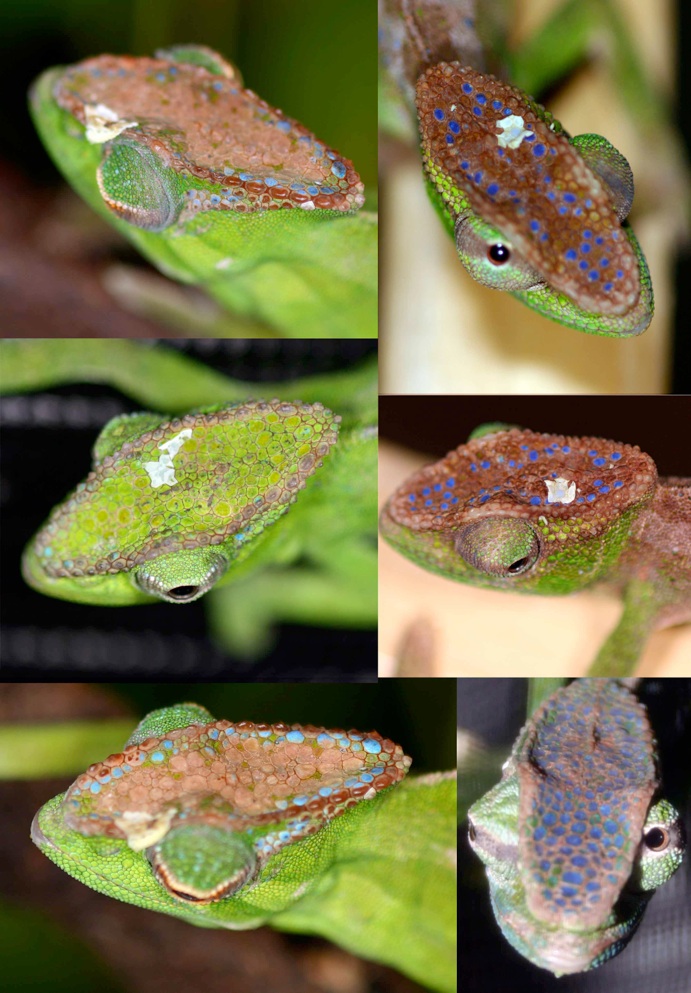
Parietal crest comparison of Ch. (T.) wiedersheimi perreti (Left) and Ch. (T.) wiedersheimi wiedersheimi (right). Photos Courtesy of Chris Anderson
(Click to enlarge image)
Additionally, in both sexes, the gular crest can be used to help distinguish between the subspecies. In Ch. (T.) wiedersheimi perreti, the gular crest is less prominent and blunter while in Ch. (T.) wiedersheimi wiedersheimi, the gular crest is more prominent and less blunt.
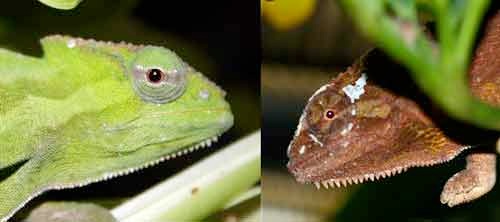
Gular crest comparison of Ch. (T.) wiedersheimi perreti (Left) and Ch. (T.) wiedersheimi wiedersheimi (right). Photo Courtesy of Chris Anderson
Rest coloration in females seems to vary slightly. In my experience, females of Ch. (T.) wiedersheimi perreti in rest coloration are more likely to be a solid light green coloration while females of Ch. (T.) wiedersheimi wiedersheimi in rest coloration tend to be a combination of light brown with a green head although I've briefly had female Ch. (T.) wiedersheimi wiedersheimi show coloration with greater amounts of green. While I have found Ch. (T.) wiedersheimi perreti to be calmer captives, due to the longevity of the female Ch. (T.) wiedersheimi wiedersheimi specimens I've worked with, I tend to believe this color difference is less a result of captive stress and more due to species or possibly individual variation.
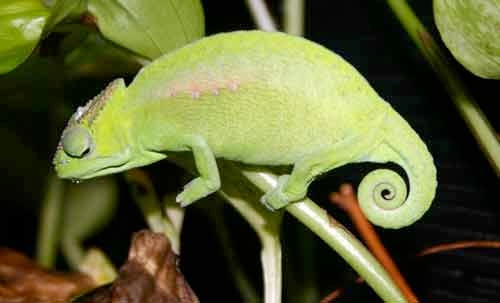
Female Ch. (T.) wiedersheimi perreti in rest coloration. Photo courtesy of Chris Anderson
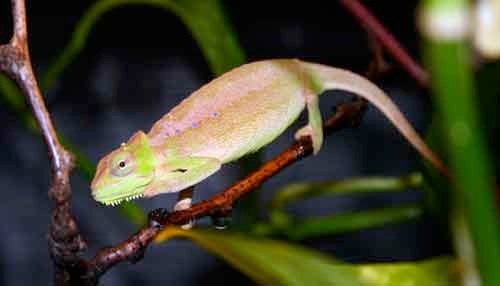
Female Ch. (T.) wiedersheimi wiedersheimi in rest coloration. Photo courtesy of Chris Anderson
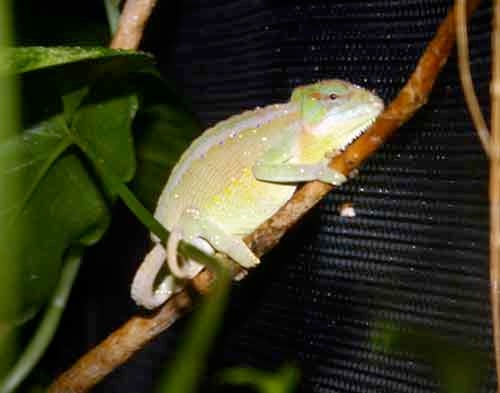
Female Ch. (T.) wiedersheimi wiedersheimi in rest coloration. Photo courtesy of Chris Anderson
Gravid female Ch. (T.) wiedersheimi wiederhsiemi, in my experience, tend to be browner with bright green flashes radiating from their eye turrets and a row of purple scales on the flanks and casque while gravid female Ch. (T.) wiedersheimi perreti have tended to be lighter colored with more purple and orange speckling on the flanks, casque and limbs.
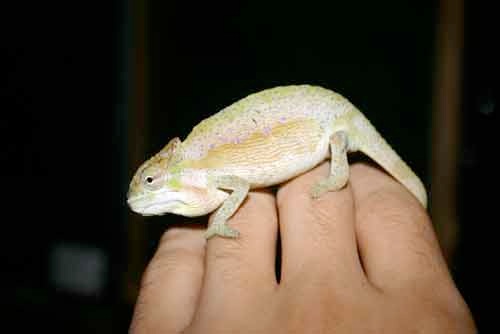
Female Ch. (T.) wiedersheimi perreti in non-display gravid coloration (note edema-this species is highly prone to this disorder). Photo courtesy of Chris Anderson
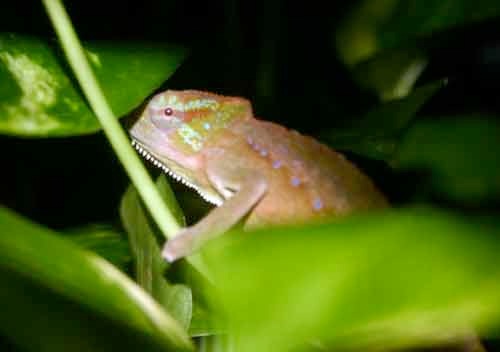
Female Ch. (T.) wiedersheimi wiedersheimi in gravid coloration. Photo courtesy of Chris Anderson
Rest coloration of males tends to be fairly easy to use for differentiation. Male Ch. (T.) wiedersheimi wiedersheimi tend to have a wide stripe down the ventral portion of either flank that, in general, is obviously differently colored than the rest of the body. Male Ch. (T.) wiedersheimi perreti don't have such an obvious stripe. Further, the coloration of male Ch. (T.) wiedersheimi perreti tends to be more of a relaxed lime green while in male Ch. (T.) wiedersheimi wiedersheimi, it tends to be a slightly brighter green with more blues when in rest.
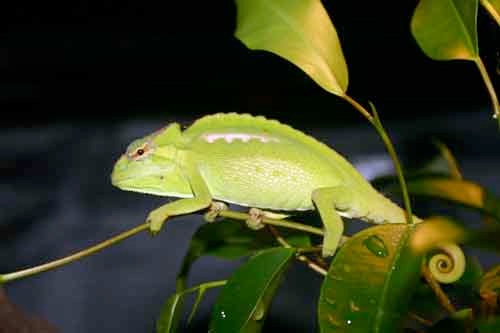
Male Ch. (T.) wiedersheimi perreti in rest coloration. Photo courtesy of Chris Anderson
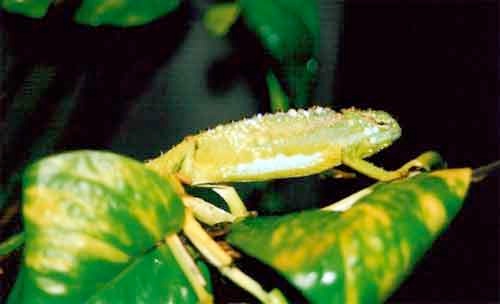
Male Ch. (T.) wiedersheimi wiedersheimi in rest coloration. Photo courtesy of Chris Anderson
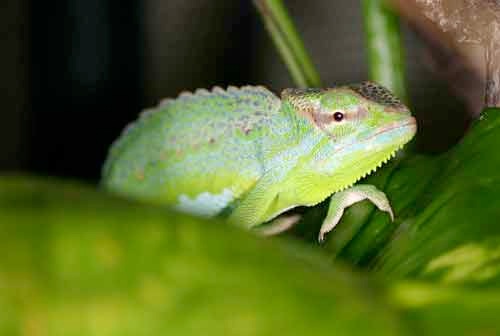
Male Ch. (T.) wiedersheimi wiedersheimi in rest coloration. Photo courtesy of Chris Anderson
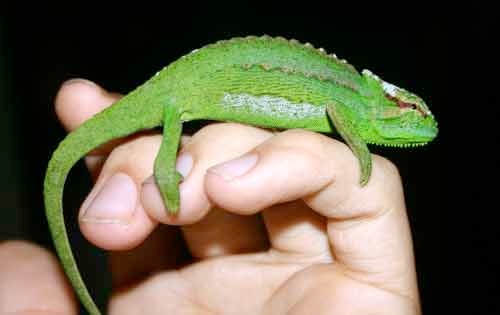
Male Ch. (T.) wiedersheimi wiedersheimi. Photo courtesy of Chris Anderson
A clear distinction based on coloration and patterning becomes obvious during courtship and territorial display. A courting male Ch. (T.) wiedersheimi wiedersheimi, or one in territorial display, becomes very dark colored with bluish purple spots all over the flanks and a bright blue top of his casque. At this point, his lightly colored stripe in the flank is particularly clear. The territorial display of male Ch. (T.) wiedersheimi perreti is less elaborate with increased patterning showing up in the head particularly.
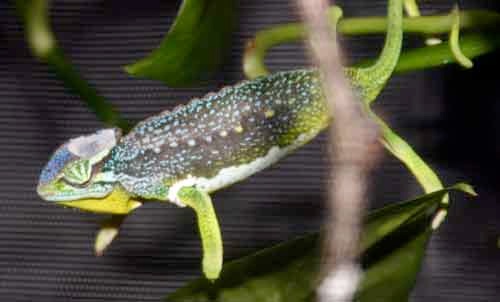
Male Ch. (T.) wiedersheimi wiedersheimi in courtship display. Photo courtesy of Chris Anderson
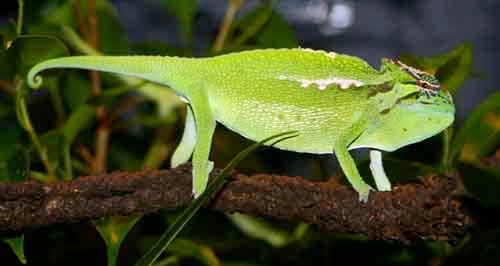
Male Ch. (T.) wiedersheimi perreti in territorial display. Photo courtesy of Chris Anderson
While this species isn't particularly easy to identify to its subspecies, hopefully this will aid those of you lucky enough to be working with them in determining what exactly you have. This species really is worth the extra effort they require and I encourage anyone working with them to add your bloodlines to contact other keepers (either through the Captive Chameleon Bloodline Tracking Database or otherwise) in an effort to enlarge captive breeding efforts.

Christopher V. Anderson
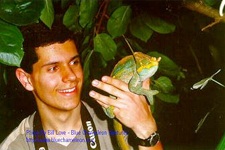
Chris Anderson is a herpetologist currently working on his Ph.D. at the University of South Florida after receiving his B.S. from Cornell University. He has spent time in the jungles of South East Asia, among other areas, aiding in research for publication. He has previously traveled throughout Madagascar in search of, and conducting personal research on, the chameleons of the region. He has traveled to over 35 countries, including chameleon habitat in 6. Currently, Chris is the Editor and Webmaster of the Chameleons! Online E-Zine and is studying the kinematics and morphological basis of ballistic tongue projection and tongue retraction in chameleons for his dissertation. Chris Can be emailed at Chris.Anderson@chameleonnews.com or cvanders@mail.usf.edu.









Join Our Facebook Page for Updates on New Issues:
© 2002-2014 Chameleonnews.com All rights reserved.
Reproduction in whole or part expressly forbidden without permission from the publisher. For permission, please contact the editor at editor@chameleonnews.com
